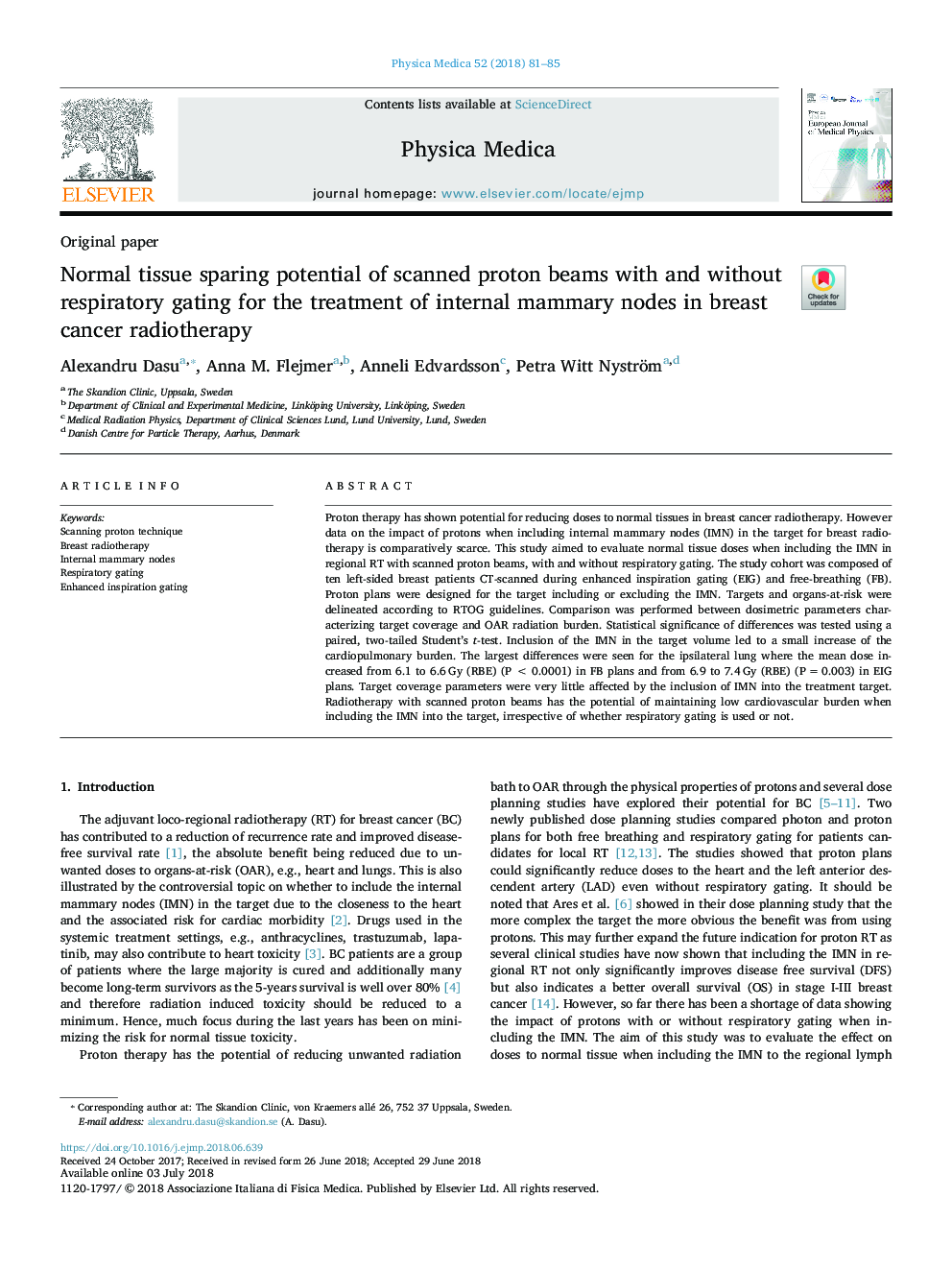| Article ID | Journal | Published Year | Pages | File Type |
|---|---|---|---|---|
| 8248414 | Physica Medica | 2018 | 5 Pages |
Abstract
Proton therapy has shown potential for reducing doses to normal tissues in breast cancer radiotherapy. However data on the impact of protons when including internal mammary nodes (IMN) in the target for breast radiotherapy is comparatively scarce. This study aimed to evaluate normal tissue doses when including the IMN in regional RT with scanned proton beams, with and without respiratory gating. The study cohort was composed of ten left-sided breast patients CT-scanned during enhanced inspiration gating (EIG) and free-breathing (FB). Proton plans were designed for the target including or excluding the IMN. Targets and organs-at-risk were delineated according to RTOG guidelines. Comparison was performed between dosimetric parameters characterizing target coverage and OAR radiation burden. Statistical significance of differences was tested using a paired, two-tailed Student's t-test. Inclusion of the IMN in the target volume led to a small increase of the cardiopulmonary burden. The largest differences were seen for the ipsilateral lung where the mean dose increased from 6.1 to 6.6â¯Gy (RBE) (Pâ¯<â¯0.0001) in FB plans and from 6.9 to 7.4â¯Gy (RBE) (Pâ¯=â¯0.003) in EIG plans. Target coverage parameters were very little affected by the inclusion of IMN into the treatment target. Radiotherapy with scanned proton beams has the potential of maintaining low cardiovascular burden when including the IMN into the target, irrespective of whether respiratory gating is used or not.
Related Topics
Physical Sciences and Engineering
Physics and Astronomy
Radiation
Authors
Alexandru Dasu, Anna M. Flejmer, Anneli Edvardsson, Petra Witt Nyström,
